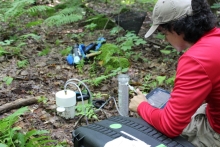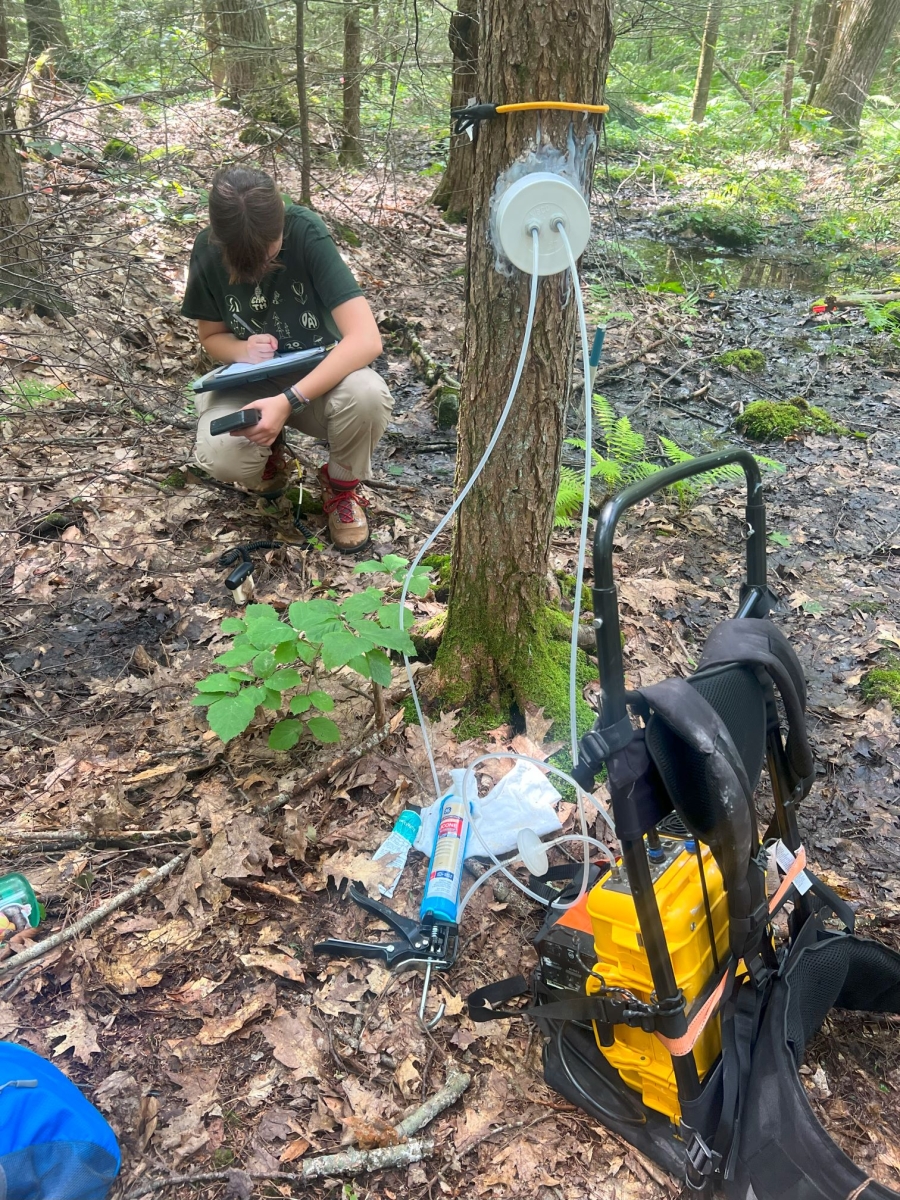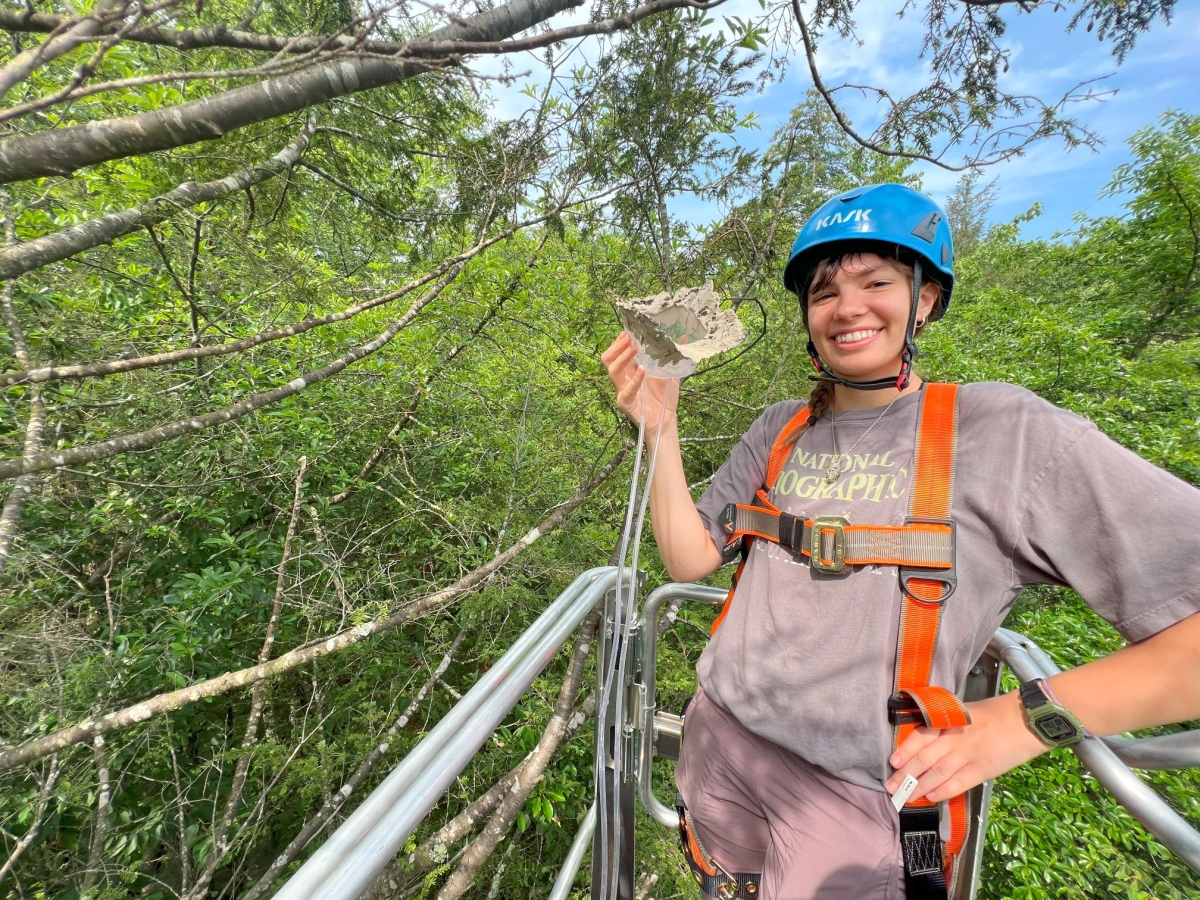You are here
Matthes Lab Awarded $1M to Study Methane Dynamics

Harvard Forest senior scientist Dr. Jackie Matthes was recently awarded a $1 million grant from the US Department of Energy's Environmental System Science Program entitled "Cross-Scale Methane Dynamics at Terrestrial-Aquatic Interfaces in Temperate Forests." In this project, the Matthes Lab at Harvard Forest will work with Dr. Missy Holbrook and Dr. Charles Harvey from MIT to measure methane dynamics at the Harvard Forest over three years.
Methane is the second most powerful greenhouse gas causing climate change and is the target for urgent global anthropogenic emissions reductions from fossil fuel leakage and agricultural production. Methane is also produced and consumed by natural ecosystems, and understanding the methane dynamics of natural ecosystems and how they are changing with climate change is essential to assessing the efficacy of methane emissions reductions.
 Measuring the methane cycle in temperate forests is particularly complex since microbes living in well-drained soils with high oxygen content consume methane, whereas microbes in flooded soils with low oxygen content produce methane. Total rainfall - particularly the amount of rainfall in extreme events - has increased due to climate change in the northeastern U.S. Consequently, this might shift the location, timing, and/or magnitude of the amount of methane consumption and production in the Forest. Additionally, it’s likely that methane produced in soils might be transported with water into roots, through trees, and ultimately into the atmosphere, but controls on this process are not well understood.
Measuring the methane cycle in temperate forests is particularly complex since microbes living in well-drained soils with high oxygen content consume methane, whereas microbes in flooded soils with low oxygen content produce methane. Total rainfall - particularly the amount of rainfall in extreme events - has increased due to climate change in the northeastern U.S. Consequently, this might shift the location, timing, and/or magnitude of the amount of methane consumption and production in the Forest. Additionally, it’s likely that methane produced in soils might be transported with water into roots, through trees, and ultimately into the atmosphere, but controls on this process are not well understood.
 The Matthes Lab will collect new field measurements in uplands, ephemeral wetlands, and two small perennial wetlands: a ~14,000-year-old forested peatland (the Black Gum Swamp) and a ~25 year old beaver-constructed wetland. This research will also leverage long-term data collection from the NSF LTER program and DOE AmeriFlux program to add new measurements of total methane and carbon dioxide exchange between the ecosystem and atmosphere. By measuring methane consumption, production, and net emissions across the landscape and throughout all seasons, this field research will be used to develop more accurate models for predicting the natural methane cycle in these complex landscapes during shifting precipitation conditions.
The Matthes Lab will collect new field measurements in uplands, ephemeral wetlands, and two small perennial wetlands: a ~14,000-year-old forested peatland (the Black Gum Swamp) and a ~25 year old beaver-constructed wetland. This research will also leverage long-term data collection from the NSF LTER program and DOE AmeriFlux program to add new measurements of total methane and carbon dioxide exchange between the ecosystem and atmosphere. By measuring methane consumption, production, and net emissions across the landscape and throughout all seasons, this field research will be used to develop more accurate models for predicting the natural methane cycle in these complex landscapes during shifting precipitation conditions.

